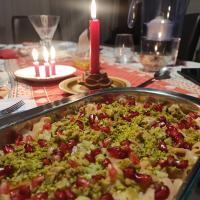Copy Link
Add to Bookmark
Report
Cider Digest #1560

Subject: Cider Digest #1560, 16 April 2010
From: cider-request@talisman.com
Cider Digest #1560 16 April 2010
Cider and Perry Discussion Forum
Contents:
MLF and Sulfite (Andrew Lea)
Grafting techniques (tbray@mcn.org)
GRAFTING (Jack O Feil)
Apples: Botany, Production, and Uses (Alan Yelvington)
Re: grafting tool query (Dick Dunn)
NOTE: Digest appears whenever there is enough material to send one.
Send ONLY articles for the digest to cider@talisman.com.
Use cider-request@talisman.com for subscribe/unsubscribe/admin requests.
Archives of the Digest are available at www.talisman.com/cider#Archives
Digest Janitor: Dick Dunn
----------------------------------------------------------------------
Subject: MLF and Sulfite
From: Andrew Lea <andrew@harphill.co.uk>
Date: Sat, 10 Apr 2010 09:04:15 +0100
John Howard wrote:
>
> I've often read that MLF will not occur in the presence of sulfites. I
> would very much like to discourage a MLF this year as I want to keep all
> the acidity I have. How many ppm should do the trick?
John, here in the UK 50 ppm is the standard dose for that. You might get
away with a bit less. The effect is probably pH dependent but I have no
data.
Andrew Lea
nr Oxford UK
www.cider.org.uk
------------------------------
Subject: Grafting techniques
From: tbray@mcn.org
Date: Sat, 10 Apr 2010 10:38:48 -0700
Following on the discussion of grafting tools, I have some questions about
different techniques.
1. Whip-and-tongue: Getting a nice long straight planar face is the easy
part. Cutting the notch into the rootstock is the hard part. The cut
goes at a shallow angle into the grain, which is always difficult and the
wood really wants to split along the grain instead. Getting a clean,
smooth cut at the bottom of the notch is often really hard for me. How do
you do this?
2. I just finished topworking several trees, using mostly cleft grafts
but also some "rind grafts" which I learned about from Stephen Hayes'
videos:
http://www.youtube.com/watch?v=LrE2CkQHudI&feature=related
Anyone here have experience with these? How do they compare with cleft
grafting in terms of take, strength, vigor, etc? They sure are easy to
do.
3. I ran out of scionwood before I ran out of trees to be topworked. Can
chip-budding be used to topwork a tree in Fall, or is it better to wait
until next Spring and continue with the cleft, rind, and W&T grafting?
------------------------------
Subject: GRAFTING
From: Jack O Feil <feilorchards@juno.com>
Date: Sat, 10 Apr 2010 05:19:15 -0700
It' the time of year for dormant grafting. The information in the last
cider digest is good, I've been grafting for seventy years and have very
good success with a very sharp grafting knife. available at A M Leonard
company. I don't use the omega grafting tool and the only advantage I see
with it is you can do a lot of grafts in a short period of time, the draw
back is that the tool isn't cheap. With the whip graft,If the scion wood
is good and not dried out, 100% take is not uncommon. You don't need the
scion wood and stock to be the same diameter as long as you carefully
line up the cambium layer. For grafting on to a large stock 5 inches or
more in diameter consider the kerf graft (notch graft) the procedure is
available on the web. I am going to use it this year and I've talked to
someone who used the method on hard to get takes on cherries with very
good results. The problem with the simple bark graft is that you have a
round stock and a flat cut on the scion so the cambiums don't touch
although if you make sure the cambium on one side of the scion touches
the cambium one side or the other of the stock results are good. I would
like to find out how to make a concave cut on the scion and the comment
using a small block plane with the blade ground to make a concave slice
might be the answer. Successful grafting is very rewarding. Practice
makes perfect. Jack Feil, Wenatchee, WA.
------------------------------
Subject: Apples: Botany, Production, and Uses
From: Alan Yelvington <alany@semparpac.org>
Date: Fri, 16 Apr 2010 20:17:50 -0400
I just got a copy of this book from Penn State Univ. using the
inter-library loan system.
Why didn't I buy it? Because it goes for $382.48 from Amazon, and it
doesn't qualify for free shipping (a real deal killer if you ask me).
Ironically, you can get it for less than half-price from amazon.co.uk
if you're interested.
Anyway, it's overwhelming, and it's very cool. I never enjoyed writing
book reports, so I'll encourage the apple people out there to find a
copy and give a look-see.
A. Yelvington
Happy Dog Farm
------------------------------
Subject: Re: grafting tool query
From: Dick Dunn <rcd@talisman.com>
Date: Fri, 16 Apr 2010 19:50:31 -0600
Thanks to various folks for opinions on the punch-style grafting tool.
Consensus seems to be it's not a winner for apples. Now, a few notes
re specific responses:
Steve Wood suggests:
> Sharpen your knife, upgrade your reading glasses, and have a glass of finest
> cider to steady your hand.
Good ideas all--sharpest possible knife is essential, eyes are fine, and
a drop (or two) not only helps but reminds why I'm doing it. The trouble
(and the reason I've been looking for alternatives) is that I've lost the
fine-motor-control in my hands over the past few years.
I put a lot of stock (sorry) in opinions from Steve Wood and Jim Cummins
because of their experience.
Also, it's clear now that the omega shape is rather short and hence won't
give as strong a graft as one would like.
Various notes suggest mismatched diameters scion/rootstock are more
difficult to manage with the "omega" tool. (To Andy Kranz-McGuire - yes,
with a mismatch you offset (in various methods) to match cambium layers.)
I like Derek Bisset's idea of a jig with a plane blade. I'm going to
try that, as I should be able to control the cutting much better. I can
try it for cutting branches and work out the kinks even if it's not
grafting time. Will report how it works.
On cutting the tongue once the main cuts are made: What I finally figured
out (probably this was obvious to others) is to start the tongue cut with
the blade in the orientation where it wants to dig in, then turn it around
for the rest of the cut so the tongue isn't too deep and doesn't want to
split. This is with a standard grafting blade (i.e., single-bevel).
- --
Dick Dunn rcd@talisman.com Hygiene, Colorado USA
------------------------------
End of Cider Digest #1560
*************************
























